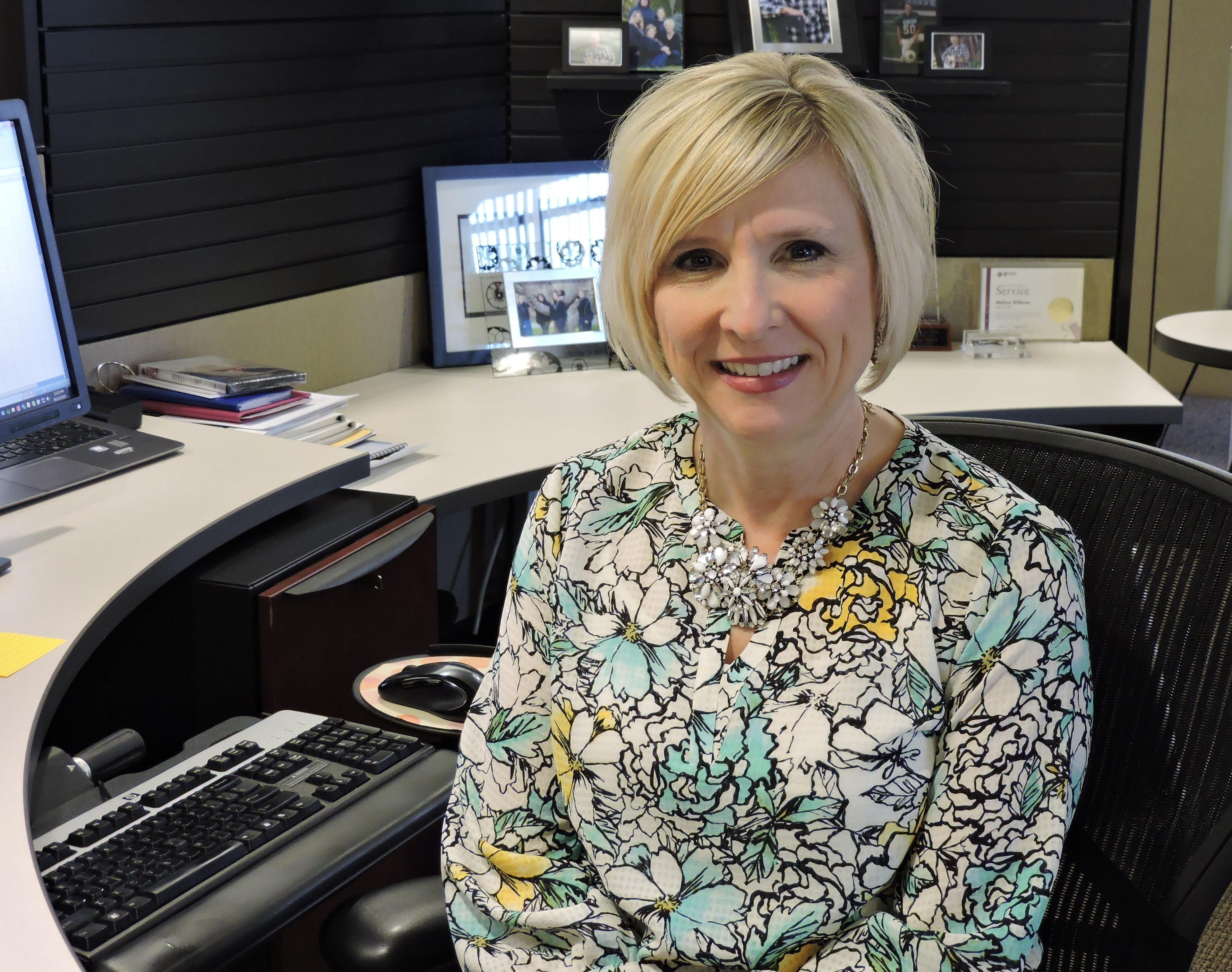Scoliosis and Pain: How One BCBSM Employee Manages Her Diagnosis
Julie Bitely
| 5 min read

If something you loved to do caused you pain, would you keep doing it? For Melissa Withrow, the answer is complicated. Exercise and working out are a mental and physical release for the executive assistant, who works for Blue Cross Blue Shield of Michigan in Grand Rapids. She hits the gym at least five days per week, something she’s been doing since she was 20. The only downside to her athleticism is its effect on her scoliosis, which she was diagnosed with at 26, when she was pregnant with her son. “There’s never a time when I don’t feel a little uncomfortable,” she said.
A Different Path
Growing up, Withrow’s parents were overweight and unhealthy. She didn’t want to repeat that cycle. She made exercise and healthy eating a priority, and stuck with both until her pregnancy led to severe back pain. “ I dislike excuses people make about their health and taking care of themselves,” she said. “If you don’t move and eat well, you won’t be healthy. It’s the bottom line. It’s also important for me to be an example to my son.”
The scoliosis diagnosis didn’t shock Withrow, who had always noticed a slight curve in her upper back, which she chalked up to poor posture. To get through the remainder of her pregnancy, Withrow turned to physical therapy. She continues to perform the exercises she learned in those initial sessions. “It’s something I’ll have to do every day for the rest of my life,” she said. After giving birth, Withrow went through traction therapy, which taught her skills to retract her neck and stay loose and limber. Withrow has curves at the top and bottom of her spine. “For me, I noticed it in my neck and my chin,” she said.
Making Adjustments
She did well with the pain of her scoliosis for quite some time, but when she started adding heavier weights and more intense activities to her workouts, she noticed that her alignment was off, causing further pain. Eventually she decided to pursue a chiropractic solution. She started seeing Dr. Eric Hartman about a year and a half ago. She visits Hartman every other week in addition to seeing a medical massage therapist. Her Blue Care Network insurance covers the chiropractic treatments except for a copay. “It was like a miracle,” Withrow said of her first visits with Hartman.
She said she gets uncomfortable toward the end of the two weeks before her next appointment. A lot depends on her behavior. If she’s completed many hard workouts, the pain might be more intense. If she’s kept up with a rigorous stretching schedule, it might not be as bad. It’s something she thinks about constantly. “I have to think about my posture all the time,” she said. Hartman said it’s unique to have a first-time scoliosis diagnosis as an adult. The condition happens more in women than men, but is usually diagnosed during the teen years. Withrow has responded positively to adjustments. After one year of adjustments, x-rays showed the degree of the curve in Withrow’s lower back went from 41 to 35 and the degree of curve in her mid-back went from 38 to 31. Seeing any change in a patient diagnosed later in life is remarkable, Hartman said. “It was great to be able to see such a change,” he said. Hartman applies pressure in an effort to lessen the curves in Withrow’s spine. “We’re always trying to focus in on those key positions to put pressure into a curve,” he said. Hartman believes that Withrow’s consistency with exercise is a good thing as it keeps her body functional. When patients aren’t as active, they can become asymptomatic, but it’s important to retain function and the ability to move over time.
Moving Forward
Withrow has no plans of giving up exercise or her chiropractor appointments anytime soon. “I want to be the 90-year-old lady walking into the Y on a winter or summer morning,” she said. “I love participating in classes of all types: yoga, kickboxing, boot camps, cross training, step aerobics, BOSU – I love to do it all. In the gym I focus on heavier weight routines, rowing, and cardio equipment.” She’d like to add cross functional training to her activity repertoire because of its foot health emphasis. She’d also like to further develop her swimming skills. “I have a feeling Dr. Hartman is key in allowing me to continue to work out at the aggressive pace I enjoy,” Withrow said. “Without his regular adjustments, my body alignment is off and I’ll be prone to injuries over time.” Sometimes, the scoliosis diagnosis and associated pain are discouraging, but the alternative is unthinkable to Withrow. “I know I’m limited from doing some types of things, but not enough for me to give up. It’s also hard hurting in 'bad' ways when you’re working hard to take care of yourself,” she said. “But, it’s a better trade off than not being able to move at all someday. Many of the friends I work out with regularly “hurt” as well; and they are not hampered by physical conditions. So, I just know it’s all part of the process.” If you liked this post, you might also enjoy:





